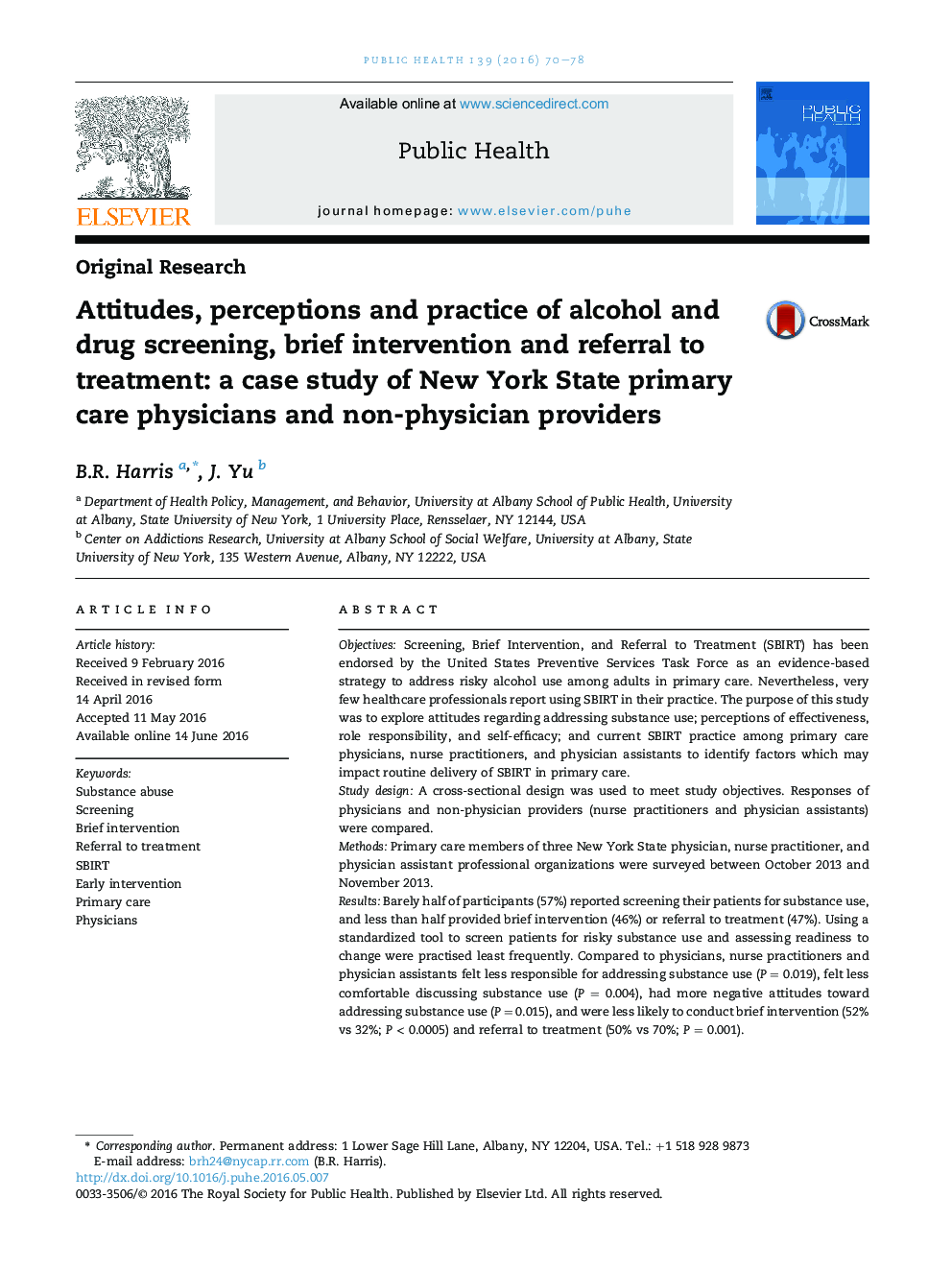| کد مقاله | کد نشریه | سال انتشار | مقاله انگلیسی | نسخه تمام متن |
|---|---|---|---|---|
| 5122925 | 1487204 | 2016 | 9 صفحه PDF | دانلود رایگان |
- There was little awareness of Screening, Brief Intervention, and Referral to Treatment (SBIRT) among participants.
- There was sporadic and variable delivery of SBIRT among participants.
- Specific components of the SBIRT model were practiced less regularly than others.
- Non-physician providers were conducting SBIRT less often than physicians.
- Non-physician providers' attitudes/perceptions were less favourable to SBIRT delivery.
ObjectivesScreening, Brief Intervention, and Referral to Treatment (SBIRT) has been endorsed by the United States Preventive Services Task Force as an evidence-based strategy to address risky alcohol use among adults in primary care. Nevertheless, very few healthcare professionals report using SBIRT in their practice. The purpose of this study was to explore attitudes regarding addressing substance use; perceptions of effectiveness, role responsibility, and self-efficacy; and current SBIRT practice among primary care physicians, nurse practitioners, and physician assistants to identify factors which may impact routine delivery of SBIRT in primary care.Study designA cross-sectional design was used to meet study objectives. Responses of physicians and non-physician providers (nurse practitioners and physician assistants) were compared.MethodsPrimary care members of three New York State physician, nurse practitioner, and physician assistant professional organizations were surveyed between October 2013 and November 2013.ResultsBarely half of participants (57%) reported screening their patients for substance use, and less than half provided brief intervention (46%) or referral to treatment (47%). Using a standardized tool to screen patients for risky substance use and assessing readiness to change were practised least frequently. Compared to physicians, nurse practitioners and physician assistants felt less responsible for addressing substance use (PÂ =Â 0.019), felt less comfortable discussing substance use (PÂ =Â 0.004), had more negative attitudes toward addressing substance use (PÂ =Â 0.015), and were less likely to conduct brief intervention (52% vs 32%; PÂ <Â 0.0005) and referral to treatment (50% vs 70%; PÂ =Â 0.001).ConclusionsThis study identifies important attitudinal and perceptual differences between physicians and non-physician providers which may be targeted by education and training and underscores an opportunity for using non-physician providers to conduct SBIRT.
Journal: Public Health - Volume 139, October 2016, Pages 70-78
